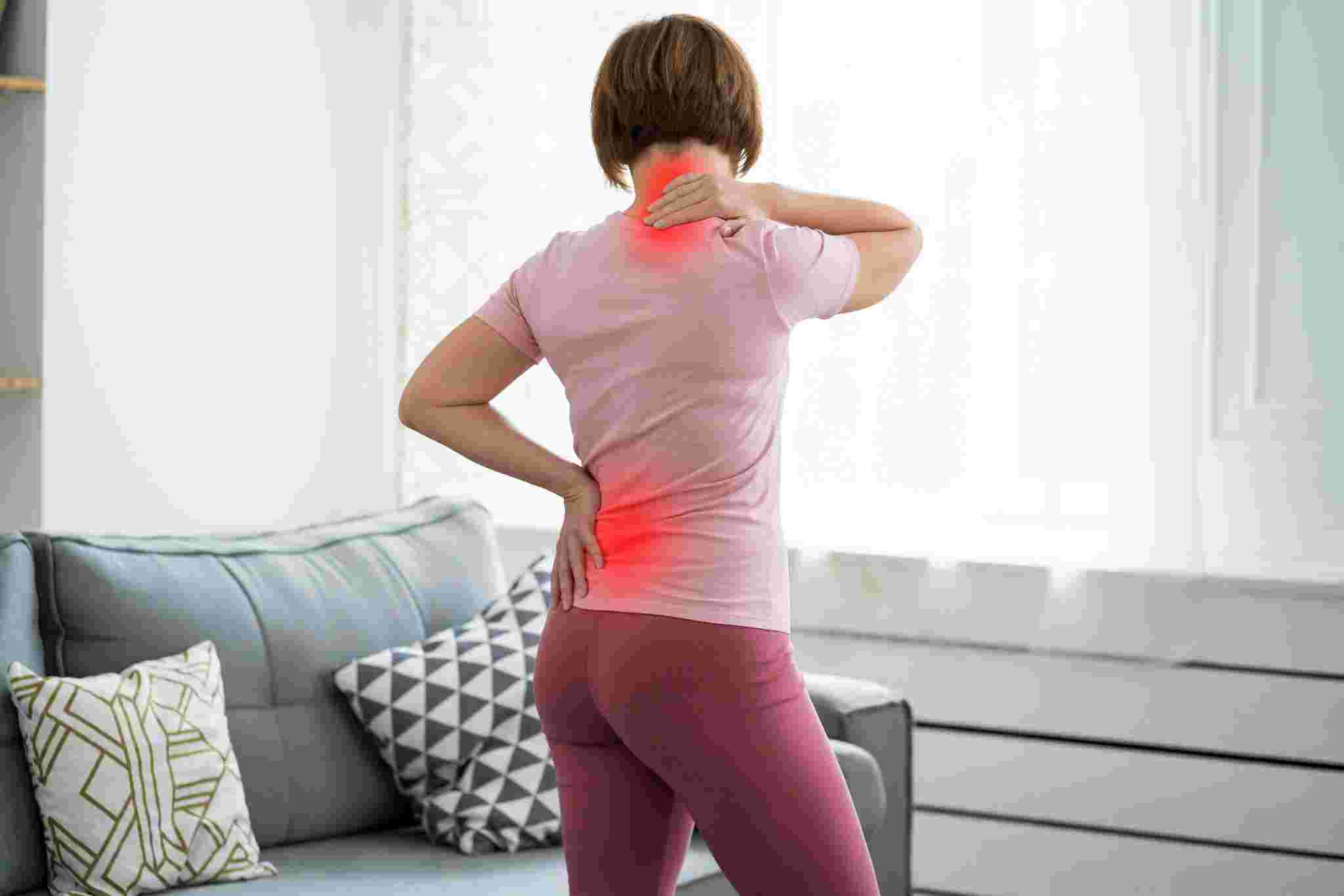Living with sciatica pain can be difficult. For some, the pain can be sharp and make even the simplest tasks a challenge. A targeted massage for sciatica pain can provide relief by reducing muscle tension and improving blood flow to affected areas.
This guide covers everything you need to know about massage for sciatica relief, different techniques, and self-care tips for managing your pain.
Understanding Sciatica and How It Affects the Body
Sciatica is a condition caused by irritation of the sciatic nerve, the longest nerve in the body. This nerve starts in the lower back, runs through the hips, and goes down each leg. When the sciatic nerve gets compressed or irritated, it can lead to pain, numbness, and weakness along its path.
The most common causes of sciatica include:
- Herniated discs: When one of the discs between your vertebrae pushes out and presses on the sciatic nerve.
- Bone spurs: These are extra bits of bone that grow along the edges of bones and can put pressure on the nerve.
- Muscle strain: Tension in the lower back or glutes can also irritate the sciatic nerve.
Sciatica symptoms vary from person to person, but many experience pain that radiates from the lower back down through the leg, often affecting one side of the body. Some feel tingling, numbness, or muscle weakness.
The symptoms can come and go or be constant. Understanding what causes these symptoms is essential to finding effective treatments like massage for sciatica pain.
Why Massage Therapy Works for Sciatica Pain Relief
Massage therapy is widely known for its ability to relieve muscle tension and improve blood circulation, making it an effective treatment for sciatica and massage therapy a powerful pairing.
When performed correctly, a massage for sciatica pain can help relieve tension around the sciatic nerve, reducing the pressure and irritation that causes pain.
Massage therapy works by:
- Reducing muscle tension: Sciatica pain often involves tight muscles in the lower back and glutes. Massage helps these muscles relax, which can reduce nerve compression.
- Improving blood flow: Increased blood flow speeds up healing by delivering more oxygen and nutrients to the affected area.
- Promoting relaxation: Massage not only relieves physical tension but also helps calm the mind, reducing the overall feeling of pain.
Including massage in your routine may bring you long-lasting relief, and it’s a natural approach that doesn’t involve medication or surgery. By focusing on the muscles surrounding the sciatic nerve, massage helps to alleviate pain, improve movement, and improve overall well-being.
Different Types of Massage for Sciatica Pain Relief
Several sciatica massage techniques can relieve pain. Each method targets different areas and provides unique benefits. Here are some of the most effective massage types for sciatica relief:
1. Deep Tissue Massage
A deep tissue massage uses slow, deep strokes to reach the deeper layers of muscle. This technique is perfect for breaking down scar tissue and reducing inflammation, which can help relieve sciatica pain. Because it targets specific muscle layers, deep tissue massage can be quite intense.
For those looking to try this at home, a Shiatsu massager can provide similar deep pressure without straining your hands.
2. Trigger Point Therapy
Trigger point therapy targets tight spots, or “knots,” within muscles that can refer pain to other areas. These points often contribute to sciatica pain by adding tension to the muscles around the sciatic nerve.
During a session, pressure is applied directly to these points, releasing the tension and reducing pain. A handheld massager can make it easier to reach and target these specific points.
3. Swedish Massage
Swedish massage is a gentler approach that uses light to moderate strokes. It’s known for its relaxing effect on the body, which helps reduce overall muscle tension. While it doesn’t penetrate as deeply as other methods, it can still be beneficial for relieving mild sciatica pain and improving blood circulation.
Using a full-body massager during Swedish massage can amplify the benefits, creating a more soothing experience.
4. Hot Stone Massage
Hot stone massage uses heated stones to relax muscles and improve circulation. The warmth of the stones encourages blood flow, which can reduce inflammation around the sciatic nerve.
For those with sciatica, using a heated massager can provide similar comfort at home. The gentle heat soothes sore muscles, making it an excellent addition to a self-care routine for sciatica.
5. Myofascial Release
Myofascial release focuses on the fascia, a thin tissue that covers muscles and other structures. This technique involves stretching and releasing the fascia, which can relieve tightness in areas that affect the sciatic nerve.
Myofascial release is often performed with the hands, but foam rollers or massage balls can also be used to target specific areas along the lower back and legs.
6. Sacrum Pressure Relief
The sacrum is a small, triangular bone at the base of the spine, which often holds tension that may impact the sciatic nerve.
By gently pressing on the sacrum and stretching the surrounding muscles, you can relieve pressure and ease sciatica pain. Avoid pressing directly on the sciatic nerve itself, as this can cause tingling or numbness.
7. Gluteus Minimus Massage
The gluteus minimus muscle can sometimes contribute to discomfort similar to sciatica pain. By using a sciatica pain relief massage on this muscle, you can relieve tension in the hips and glutes.
Start by applying light pressure, then gradually increase it to reach deeper layers, which helps to alleviate tightness.
8. Greater Trochanter Elbow Glide
The greater trochanter, at the top of the thigh bone, often holds deep tension. By gently gliding the elbow along this bone, you can release pressure in the surrounding tissue.
This technique can be especially helpful for those experiencing hip tightness related to sciatica pain. For self-massage, a tennis ball can work well to target this area.
9. Gluteus Maximus Petrissage
Petrissage is a kneading technique that helps to release tightness in the glutes and improve blood flow.
With the gluteus maximus, this technique is particularly effective for reducing tension around the sciatic nerve. Use broad pinches and gentle knuckles to work the muscle, avoiding direct pressure on the nerve itself.
10. Tennis Ball Piriformis Massage
The piriformis muscle can sometimes press on the sciatic nerve, causing discomfort. To release this tension, sit on a tennis ball and roll it gently under the glutes, focusing on any tight spots.
For a deeper stretch, cross one leg over the other, exposing the piriformis and enhancing the massage’s impact. This technique is ideal for targeting the glutes and easing pressure around the sciatic nerve.
When to Avoid Massage for Sciatica
While massage therapy can be highly effective for relieving massage and sciatica pain, certain situations make it unsuitable. If you’ve recently sustained an injury, particularly one affecting your back, legs, or pelvis, it’s wise to wait until you’ve fully healed before considering a massage.
Applying pressure on recently injured areas can sometimes aggravate the condition, leading to further discomfort or delaying the healing process.
Here are some specific situations where it’s best to avoid massage:
- Recent Injuries: Applying pressure on recently injured areas, especially in the back or legs, can aggravate the condition and slow down healing. It’s advisable to wait until injuries have healed before undergoing massage therapy.
- Acute Inflammation: During a severe flare-up of sciatica symptoms, especially with visible swelling, redness, or warmth around the affected area, massage might worsen inflammation and intensify discomfort. Allow time for the swelling to subside before attempting massage therapy.
- Blood Clotting Disorders: Individuals with blood clotting issues should avoid deep massage techniques. The pressure involved could potentially dislodge clots, leading to serious complications.
- Advanced Osteoporosis: For those with weakened bones due to advanced osteoporosis, massage may apply too much force, increasing the risk of fractures or discomfort. Gentle techniques or alternatives may be more appropriate.
- Nerve Damage: Sciatica often involves nerve issues, so if you have existing nerve damage, massage can be challenging and potentially risky without specialist guidance.
- Pregnancy-Related Sciatica: If you’re pregnant and experiencing sciatica, it’s essential to seek out a therapist with experience in prenatal massage, as general techniques could place strain on sensitive areas.
Consulting a healthcare provider before starting massage therapy is strongly recommended, especially if you have any underlying health issues. They can help determine if massage is appropriate for your condition and suggest safer alternatives when necessary.
Top Benefits of Massage for Sciatica and Muscle Tension
Massage therapy provides a range of benefits for individuals dealing with sciatica pain and muscle tension. Here’s how massage can make a positive impact:
- Pain Relief: Massage reduces tension around the sciatic nerve, helping to alleviate pain and discomfort. By easing muscle tightness, massage decreases pressure on the nerve, allowing for improved comfort and mobility.
- Improved Mobility: Regular massage keeps muscles flexible, enhancing your range of motion. This is especially important for those with sciatica pain, as it often restricts movement, making daily activities challenging.
- Enhanced Circulation: Massage increases blood flow, delivering essential oxygen and nutrients to the affected areas. Improved circulation supports faster healing, reduces inflammation, and helps maintain muscle health.
- Reduced Stress: Sciatica pain can cause both physical and mental stress. Massage promotes relaxation, which helps lower stress levels and enhances overall well-being. Reduced stress also supports the body’s natural healing processes.
- Better Posture: Massage therapy can help improve posture by releasing tension in tight muscles and realigning your body. Poor posture is often a contributing factor to sciatica pain, so improved alignment can reduce strain on the sciatic nerve and minimise discomfort.
For the best results, consider using a handheld massager or full-body massager for targeted relief. These tools are designed to ease muscle tension, reduce inflammation, and enhance relaxation, making them a great addition to your routine for managing sciatica pain effectively.
Self-Care Tips for Sciatica Pain and When to See a Specialist
While massage can be highly effective, combining it with other self-care methods can make a significant difference. Here are some tips for managing sciatica pain at home:
- Gentle Stretching: Exercises like the knee-to-chest stretch help reduce pressure on the sciatic nerve. Always stretch slowly and avoid sudden movements.
- Heat Therapy: Applying heat to sore areas can relax muscles and reduce pain. Consider using a heated massager or warm compress for extra relief.
- Low-Impact Exercise: Activities like walking, swimming, or cycling can keep your muscles engaged without putting strain on them.
- Practice Good Posture: Poor posture can worsen sciatica pain. Pay attention to your posture, especially if you spend long hours sitting.
It’s essential to consult a specialist if:
- Your pain persists for more than a few weeks
- You experience severe or sudden pain in the lower back or leg
- You have trouble controlling your bladder or bowels
Seeing a healthcare professional can help you find the best treatment options for your condition, especially if self-care methods aren’t providing enough relief.
Massage Therapy for Sciatica Pain Relief
Massage therapy is a natural and effective way to manage sciatica pain. By relieving muscle tension and boosting blood flow, massage can reduce discomfort and improve mobility. Adding massage to your self-care routine may provide lasting relief, helping you move freely and enjoy a more comfortable life.
Experience Effective Sciatica Pain Relief with Targeted Massage Tools
Are you ready to experience massage for sciatica pain relief? Check out OSIM’s range of massagers designed for targeted pain relief. Embrace comfort and discover a pain-free lifestyle with OSIM today!




